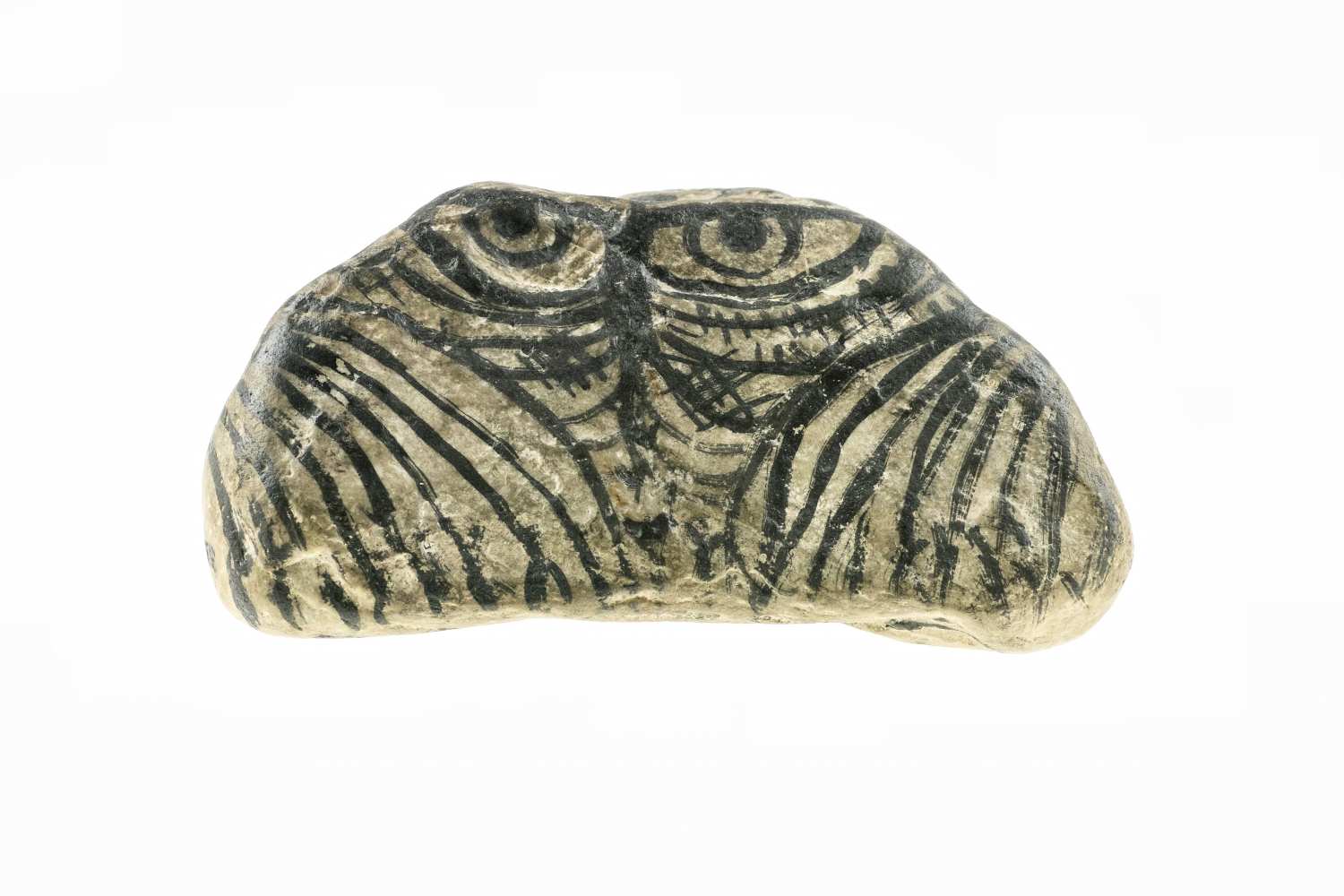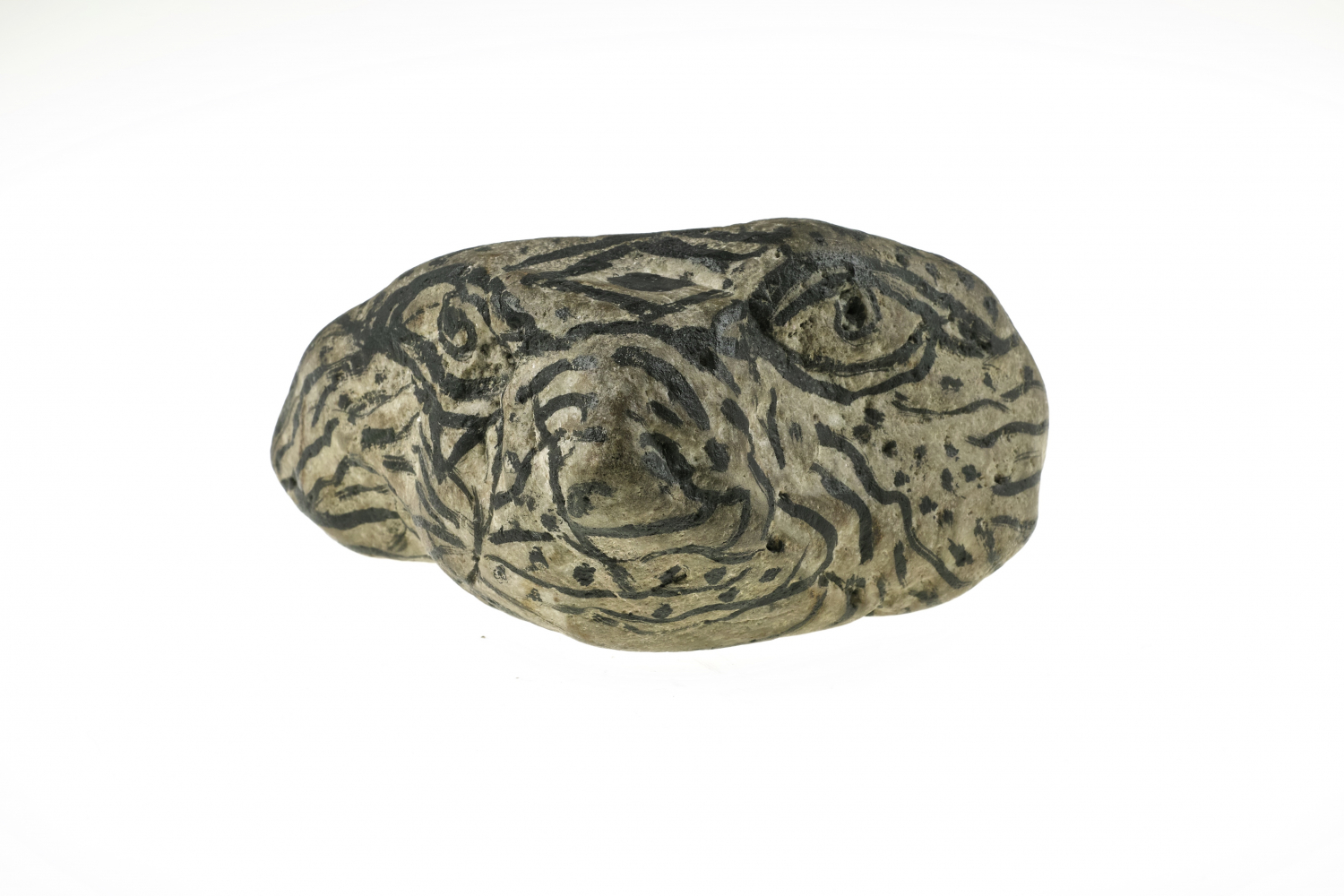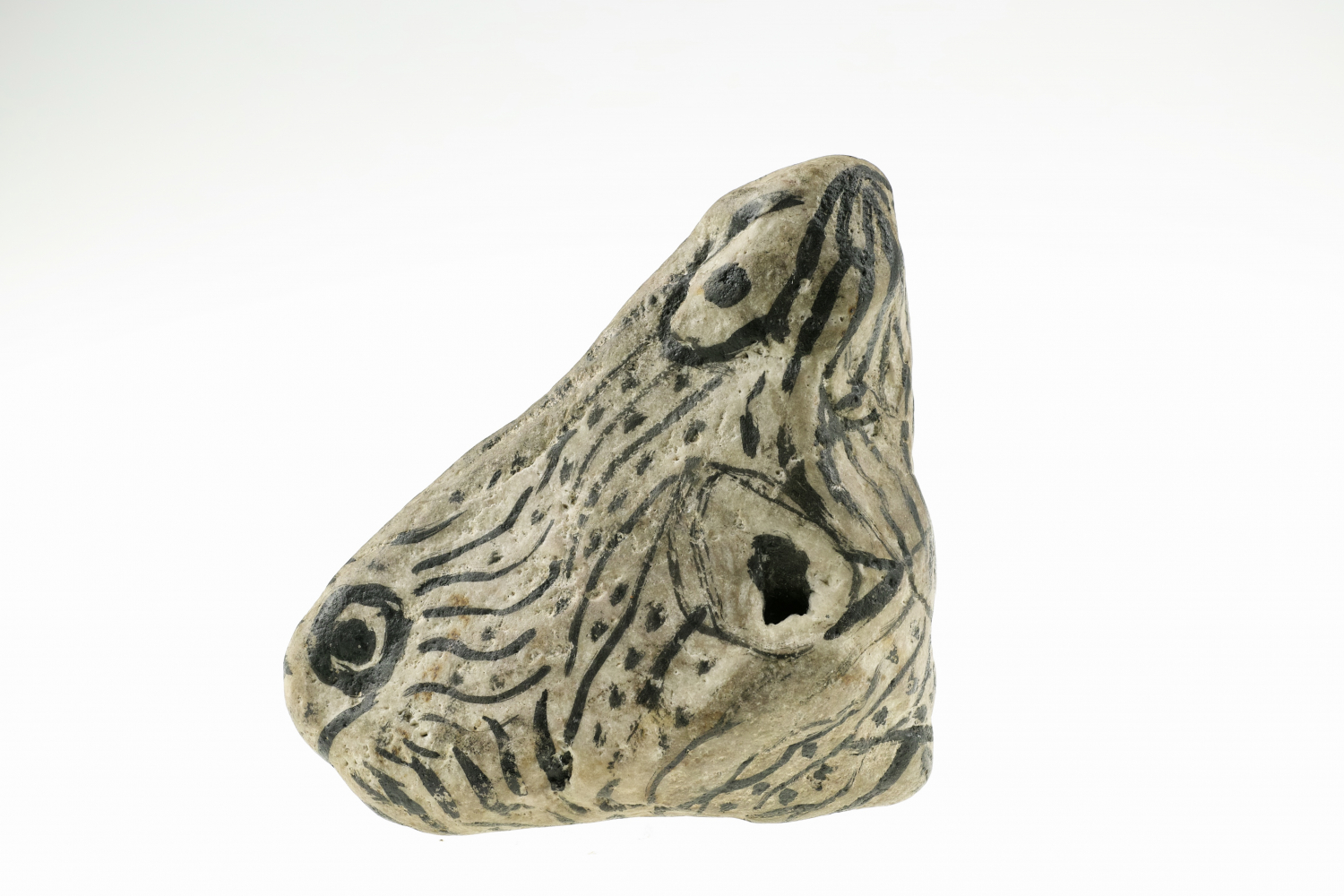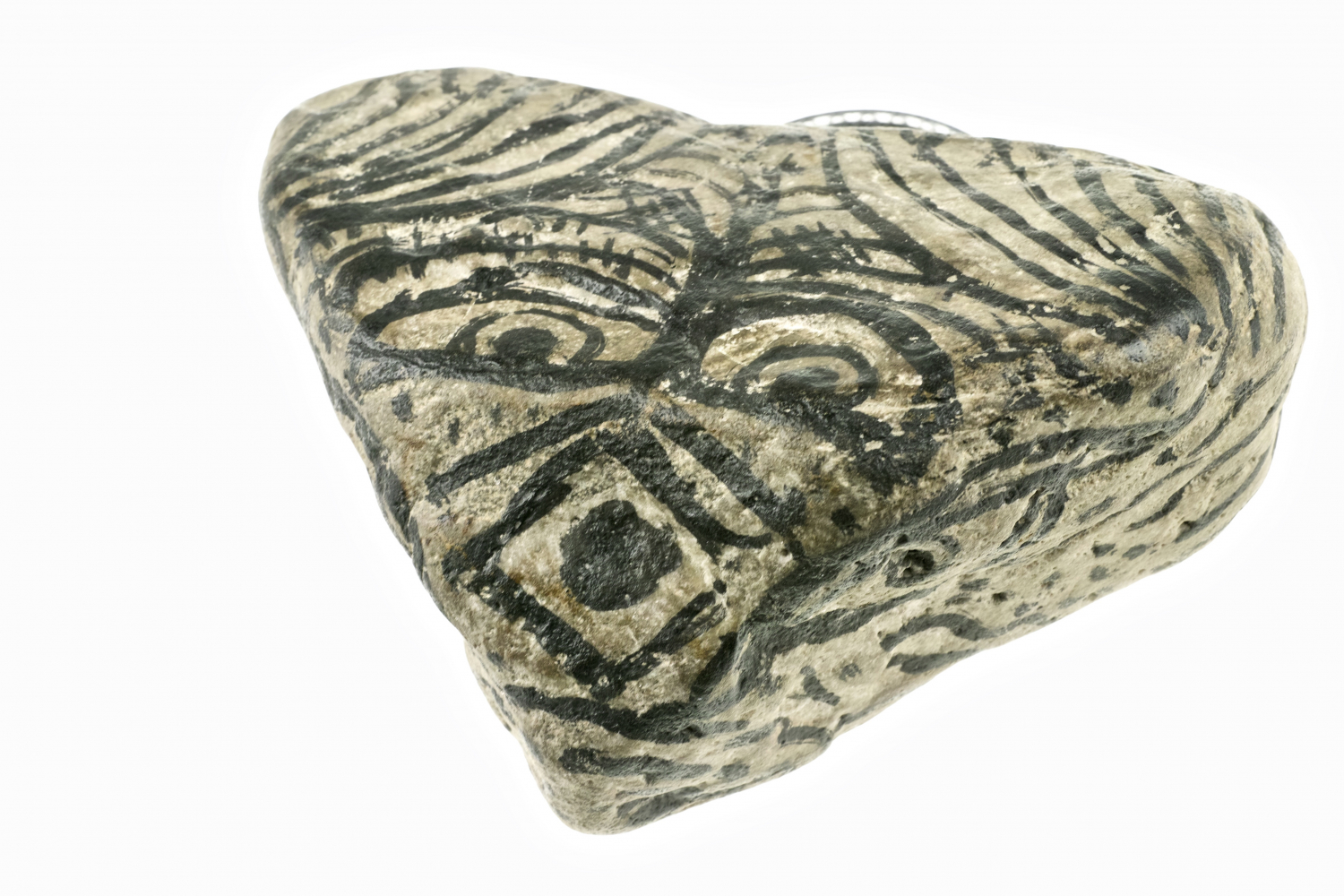Farh El Nissa Zeid
1901 – 1991
Turkish School
Sea Rock, with Three Faces.
Painted stone. 18 x 9 x 8cm
Ex Collection of André Breton. 42 rue Fontaine, Paris.
In 1953, the Parisian Gallery, Dina Verny, organised a personal exhibit tor the Princess Farh El Nissa Zeid.
The event was given the title : The Rocks of the Sea.
Much impressed by her creations, André Breton wrote: ..a ray emanates from these admirable geodes, newly gestated, which expand infinitely under one’s fingers, and which contain the force to pierce the very darkest reaches.
A number of the Princess’s painted rocks were published and illustrated in the first volume of Le Surréalisme (the first trimester of 1956, page 23).
The present example, which depict three interlocking visages, was part of André Breton’s personal collection.
Exhibitions :
1. Mjellby Konstmuseum, Halmstad, Sweden
«Surrealistika Ting» June 1 – October 17, 2012.
2. Schirn Kunsthalle, Frankfurt, Germany
«Surreale Dinge». February 10 – May 29, 2011.
(full page color reproduction. Page 112.)
3. Kulturamt der Stadt Fellbach
13th Triennale Kleinplastik 2016
Andrea Büttner
June 11 – October 02, 2016.
Hugnet , poet, critic, painter, sculptor, graphic artist and film-maker was a passionate student of the Dada movement. In 1938, among his other accomplishments and at the request of Alfred H. Barr, he penned all the catalogue entries for the landmark exhibition at New York’s MOMA, Fantastic Art, Dada, Surrealism. His activities and his keen intelligence brought him to the attention of André Breton. Hugnet was an active member of the Surrealist movement from 1932 onwards, but his relation to the group was stormy. He was excluded from it in 1939, for having continued a relationship with Eluard after the latter’s rupture with Sea Genies Golden sea eyes and hair harvested from the seas Foam of the wave knights of bream Plancton of impatient loves Syllables of a desperate song coursing around the world in the gentleness of the wind in the anger of the wind in the gaiety of the wind
Breton. He was the subject of physical violence with members of the movement on two occasions: for having defamed Main à la Plume in 1943, and twenty years later, the memory of Benjamin Péret. Despite passionate personality clashes, a very common occurrence in the group, Hugnet’s exceptional talent and his literary gifts made him one of Surrealism’s intellectual pillars and most vital adherents.
Several of Hugnet’s works were collected by André Breton, and his extravagantly fanciful photographic collages and “Spumifières” have been the subject of numerous museum retrospectives and major catalogues.
The present object-poem is a hybrid literary and artistic art form which was developed concurrently by Hugnet and Breton. Hugnet vacationed on the Île de Ré each summer, and collected pebbles on the beach. Their fanciful forms suggested figures to him, which were painted to preserve and to fix his fantasy in a genre dubbed by Breton as “re-worked natural objects”. The unconventional titles given to certain of these is recorded in an exhibition catalogue of the
Galerie de L’Institut in Paris, where the artist presented a series of painted stones in 1955. The present poème-objet , listed as number 87 of the catalogue, is the most ambitious and developed among them, and the only one which has been enriched with a literary accompaniment. It assembles a group of thirteen painted pebbles to which sea vegetation has attached itself. Their filaments and their tiny forms suggested Ondins to the poet, Nordic, masculine geniuses of the sea, personified with extravagant imagery as the unrequited or unconsummated “Plankton of impatient love”.




